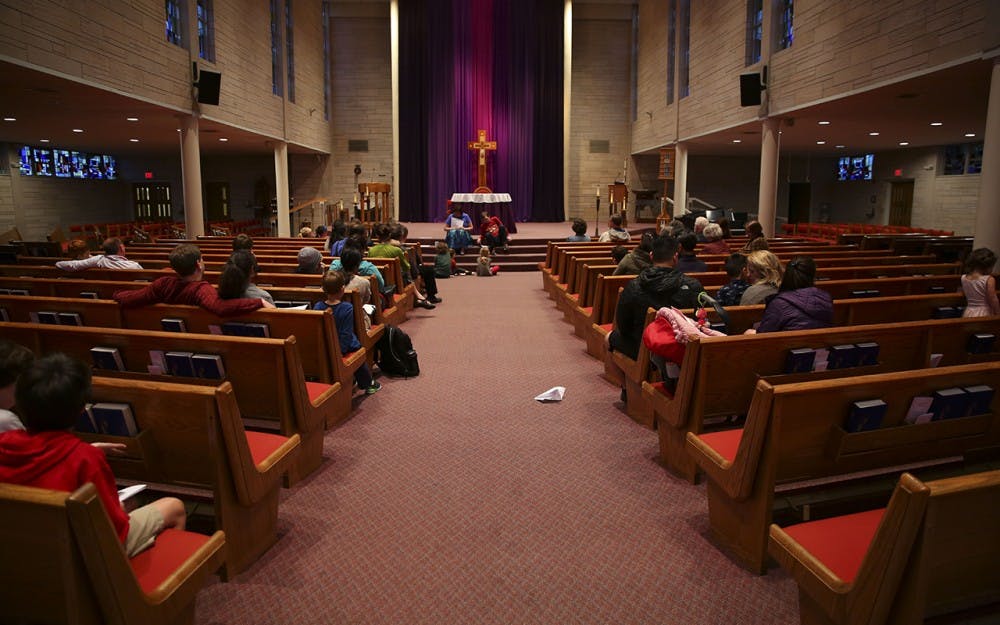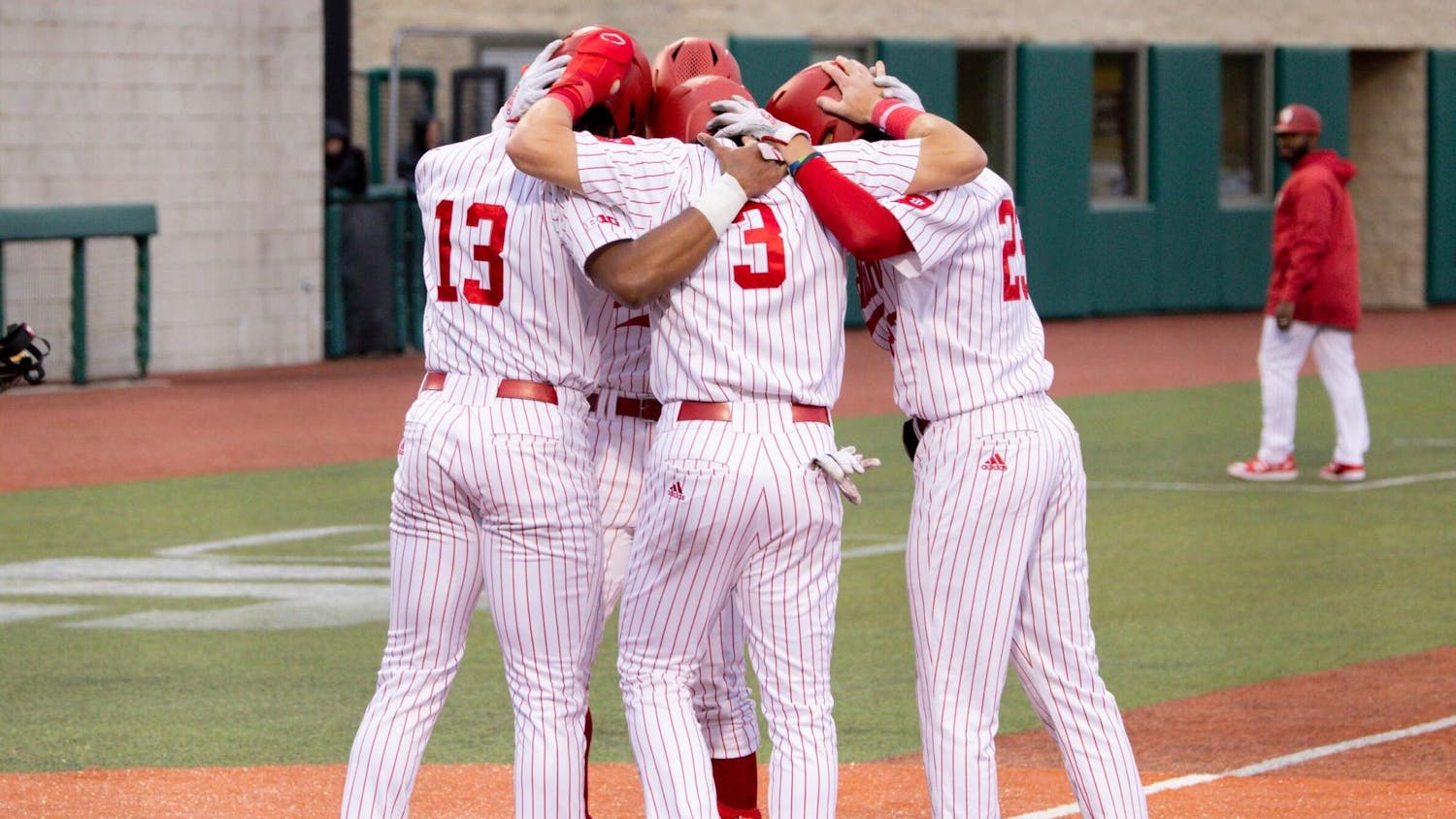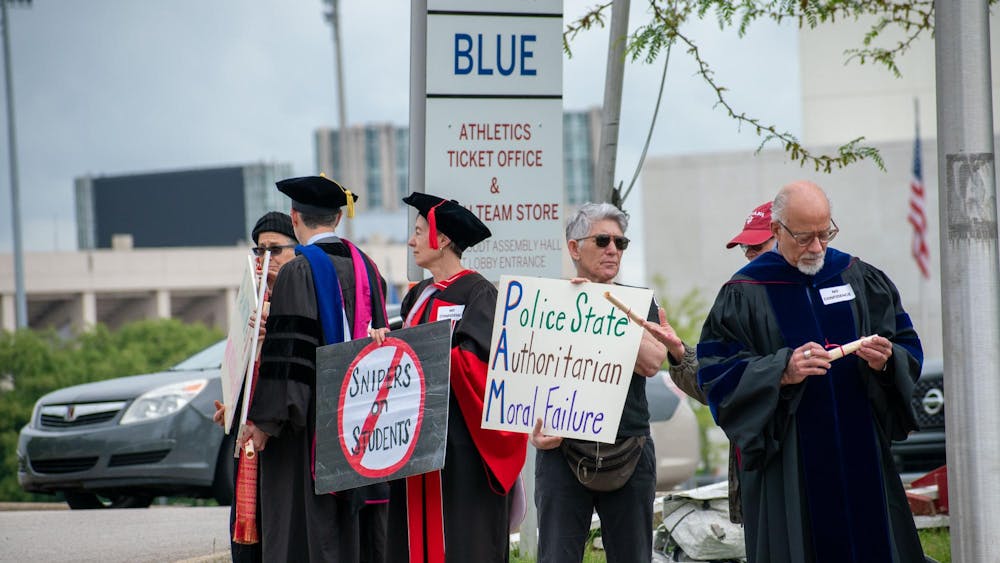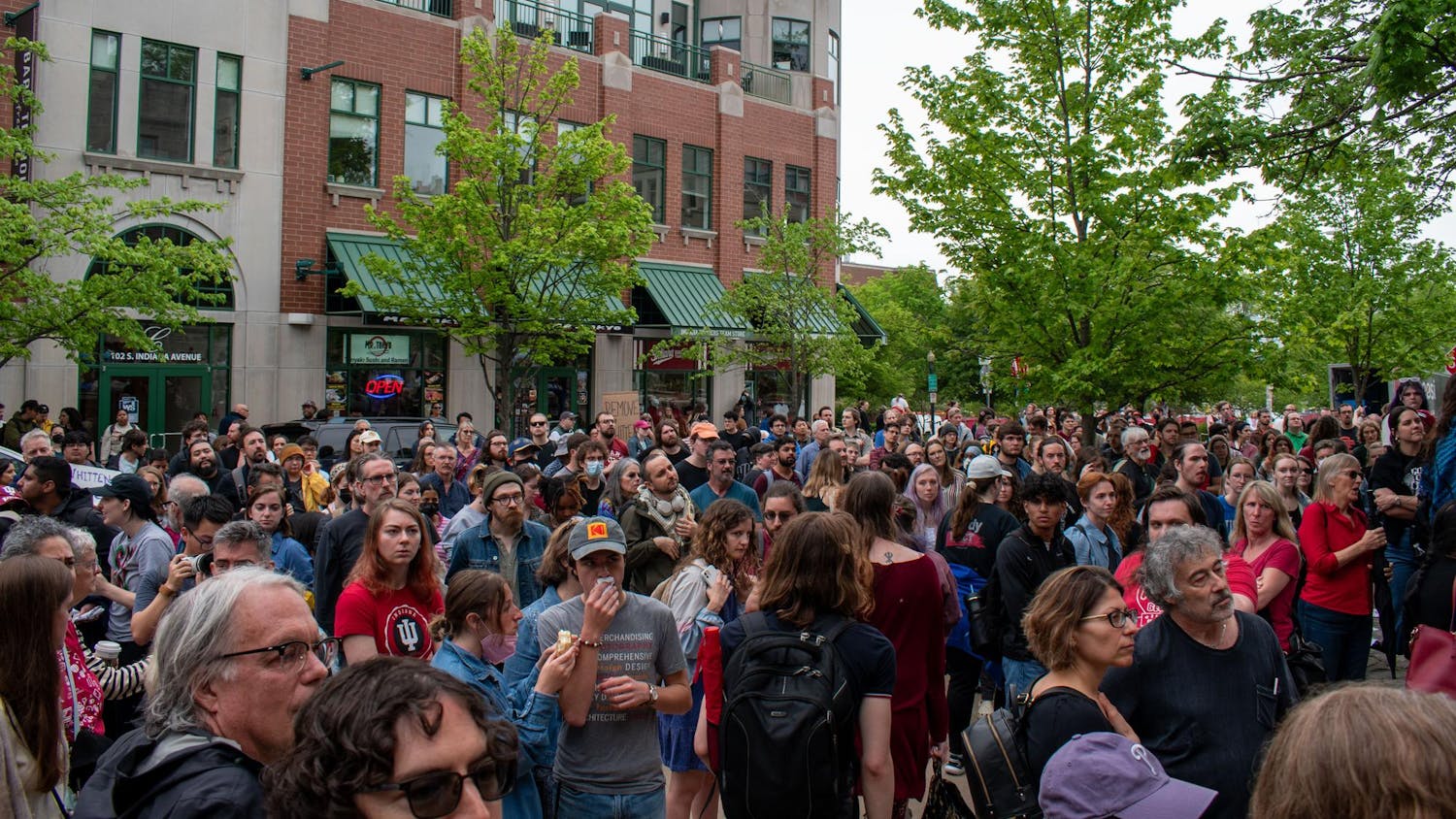Children gathered in the front of the sanctuary to listen to two storytellers speak. While one told a story of a boy transforming into a dragon, the other ran up and down the steps to play the character, earning the laughter of the audience.
The story began St. Paul Catholic Center’s Carnevale celebration Tuesday evening. The Feast of Carnevale event also involved craft stations for children, as well as a feast of jambalaya, po’boys and pancakes. The evening ended in prayer and reflection in preparation for Lent.
Lent refers to the days of fasting, moderation and repentance that lead up to the celebration of Jesus’ resurrection during Easter, Bridget McIntyre, administrator of religious education, said.
Attendee Charlene Miller said the introductory story and its connection to the theme of the event, “Who Am I Becoming?” represented the purpose of Lent as a whole.
Just as the character of the story transformed into a dragon, Catholics transform into something better than their past selves during Lent, she said.
“That’s the goal,” Miller said. “It’s to become better by fasting and reflecting and realizing your faults.”
McIntyre said fasting helps bring parishioners closer to God during the Lenten season.
“It removes external distractions from your relationship with God,” McIntyre said.
While fasting brings Catholics closer to God through sacrifice, Miller said it is still impossible for anyone to understand the sacrifices of Jesus.
Miller said Catholics only live in moderation during Lent, but Jesus spent 40 days in the Judaean Desert without food or water. She said Jesus also died on the cross for humanity — a sacrifice no Catholic can completely fathom.
After the story ended, attendees headed down the stairs. Each table in the basement was decorated with a vase full of Goldfish crackers and Mardi Gras beads. Purple banners hung from the ceiling.
McIntyre said the color purple represented the idea of penance during the Lenten season.
“It’s about atonement,” McIntyre said. “We sacrifice worldly things to better understand and draw closer to God.”
Children gathered with colored pencils in hand to decorate a banner with the word, “Alleluia.” Another group of children crowded around the pancake griddles. Miller said the food of the feast is symbolic of what Catholics will sacrifice as they enter the Lenten season.
McIntyre said the jambalaya and po’boys mirrored Creole tradition during Mardi Gras, which is the day before Lent begins. But the pancakes also held meaning, McIntyre said.
In history, McIntyre said Catholics made pancakes that combined eggs, milk and lard so they could use up more extravagant ingredients before Lent began.
“Using up those ingredients eliminates the temptation to give into them during Lent,” McIntyre said. “It helped keep focus for fasting during Lent.”
Connor Starks, storyteller and performer, said he enjoyed how the schedule was lined up for the Carnevale celebration. While the event began with stories, food and laughter, he said it ended with reflection, prayer and self-examination.
“We’re here to have fun,” Starks said. “But it’s also a time to be solemn and look within ourselves to prepare for more serious and reflective time during Lent.”
The core of Carnevale is the transition to the more solemn days of Lent, McIntyre said.
“As the night goes on, we shift our perspective to focus on God rather than just ourselves,” McIntyre said. “We have fun, but we also look to the days to come and realize what Jesus sacrificed for us.”






